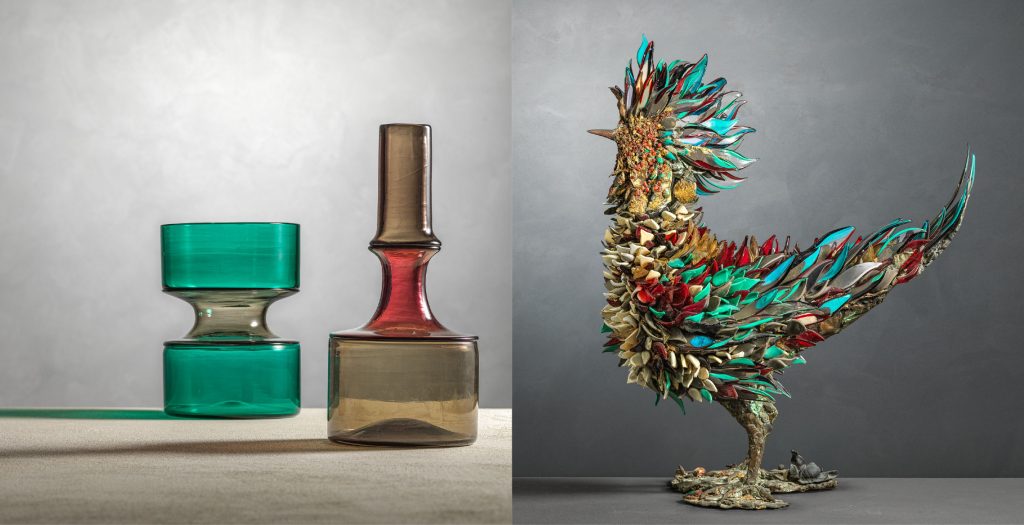
Tapio Wirkkala, vasi con profilo concavo, 1966. Ph. Enrico Fiorese
Toni Zuccheri, Fenice, vetro policromo e bronzo, 1987. Ph. Enrico Fiorese
International conference Tapio Wirkkala and Toni Zuccheri
The focus on designers and artists in the history of the Venini glassworks continues in 2022 with a fascinating, significant comparison of two highly individual personalities who collaborated with the Murano company during the 1960s. Proposed by the Glass Study Centre and conceived in correlation and concomitance with the double exhibition, the conference will explore in depth the work of Tapio Wirkkala and Toni Zuccheri, key figures who exercised a crucial influence on the Murano glassmaking world, as will be described by various experts. A leading exponent of the celebrated Finnish school, Wirkkala represented a qualitative breakthrough for Venini, especially as regards the incalmo technique, which he combined with mezza filigrana and murrine. Zuccheri, on the other hand, who inherited the passion and art of his father Luigi, an animal painter, experimented by immersing himself in the environment of the furnace. His initial animals, especially birds, were made of polychrome glass through the bold use of refined techniques. A Scandinavian minimalist, Wirkkala was a sculptor, industrial and graphic designer capable of mastering many materials on any scale, while Zuccheri used an imaginative, multifaceted language in a very different way, redolent of the vitality of nature, an inexhaustible source of inspiration, as for example in his elaborate concept of the Bestiary.
This is the starting point for the comparison between two styles, two ingenious spirits, each with their own cultural and technical background, capable of achieving very different kinds of eloquence with “glass matter” through their Murano experiments.
The Italian and foreign experts invited to the conference will examine the many aspects that characterise these two personalities, from their training to the versatility of their creative practice. They are an example of just how far the joint presence of diverse inventive talents on Murano contributed to providing a constant flow of lifeblood, innovating the art of glass, also in the broader context of the international art scene.
